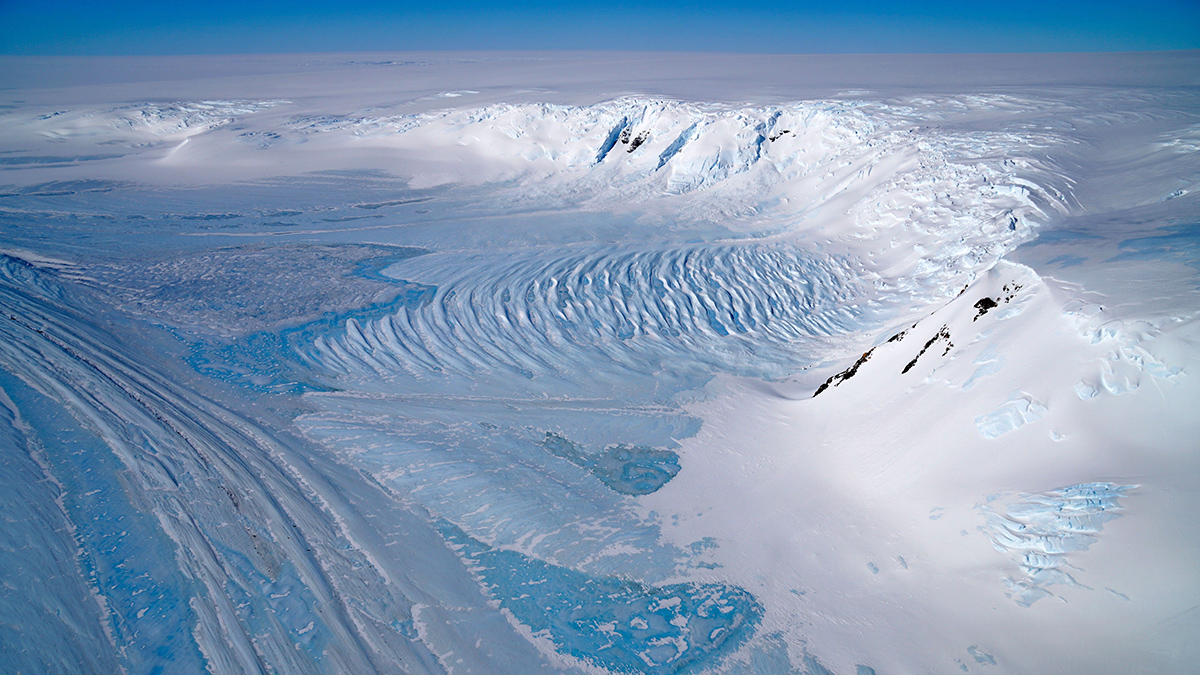Imagining Earth millions of years ago—its landscapes, atmosphere, temperature—is challenging.
In Antarctica, however, rare formations known as blue ice areas may offer a distinct look into that deep past. These areas, which make up barely 1% of the continent, form where strong winds strip away surface snow. Not all blue ice areas contain very old ice, but sometimes the slow movement of the ice sheet preserves ancient layers.
The Allan Hills region, situated on the edge of the East Antarctic Ice Sheet, is one such blue ice area. Here researchers have discovered ice up to 6 million years old—the oldest yet found.
Their study of the ice, published in Proceedings of the National Academy of Sciences of the United States of America, revealed that parts of it formed during periods far warmer than today—times when sea levels were higher and open forests and grasslands covered much of the planet.
The Allan Hills ice cores are not continuous. The oldest continuous ice core, also extracted from Antarctica, may reach back about 1.2 million years. Scientists compare continuous cores to a video: an uninterrupted, sequential history. Blue ice samples like the ones taken from Allan Hills, on the other hand, function as scattered fragments or disassembled snapshots that capture events beyond the video’s timeline.
“The advantage of Allan Hills is how far back these snapshots extend,” said Sarah Shackleton of the Woods Hole Oceanographic Institution and lead author of the study. “Modeling suggests the oldest possible continuous ice core in Antarctica might not go beyond 1.5 million years. To study earlier times, we need alternative samples.”
The Allan Hills project is part of the Center for Oldest Ice Exploration (COLDEX), which seeks to uncover the oldest possible ice records to better understand Earth’s climate history.
A Frozen Archive of Deep Time
The team, led by Shackleton and John Higgins of Princeton University, drilled 200 meters to uncover these ice fragments that trap “ancient precipitation—and, more importantly, ancient air,” Higgins explained. The researchers measured isotopes of gases (such as argon-40) to estimate the ice’s age and isotopes of water (such as oxygen-18 and deuterium) to reconstruct past climates.
According to the study, the Antarctic region cooled by about 12°C over the past 6 million years, documenting the long-term transition from a relatively mild Miocene to the relatively icy world we know today.
This record is critical because while the planet has sustained much hotter temperatures, many of its human inhabitants have not: Although the last interglacial period was warmer, we have rarely experienced the planet as warm as it is today. The past is a valuable source for identifying potential warming scenarios.
“These are pieces of a larger puzzle,” said Lidia Ferri, a glaciologist with the PARANTAR project, a research project carried out at the Universidad de Oviedo in Spain to study Antarctica’s South Shetland Islands. “We can establish cycles and identify inflection points. If the ice disappears, other factors are triggered, like changes in atmospheric dynamics and ocean currents. It’s a deeply interconnected system.”
Toward Future Climate Projections
“We use the planet’s past climate as a way to ground-truth the models we’re developing to predict what’s ahead.”
A main question posed by the new research is why past climates were so warm: Was it because concentrations of atmospheric greenhouse gases were higher, or were other factors at play? By studying the atmospheric remnants trapped in blue ice, the researchers hope to refine the models used to project Earth’s future.
“We use the planet’s past climate as a way to ground-truth the models we’re developing to predict what’s ahead,” Shackleton explained.
Ferri concurred, noting the value of gathering data from different time periods. “Today’s models are becoming more precise because the data is more varied,” she said. “The temperature increase predicted for the next 50 years isn’t the same as one 10,000 years ago, and this ancient data helps enrich those models.”

The team plans to return to Allan Hills, though Antarctic fieldwork is notoriously challenging. “We’re in a remote field camp with no permanent structures,” Higgins said. “It’s incredibly windy and completely isolated.”
—Mariana Mastache-Maldonado (@deerenoir.bsky.social), Science Writer

